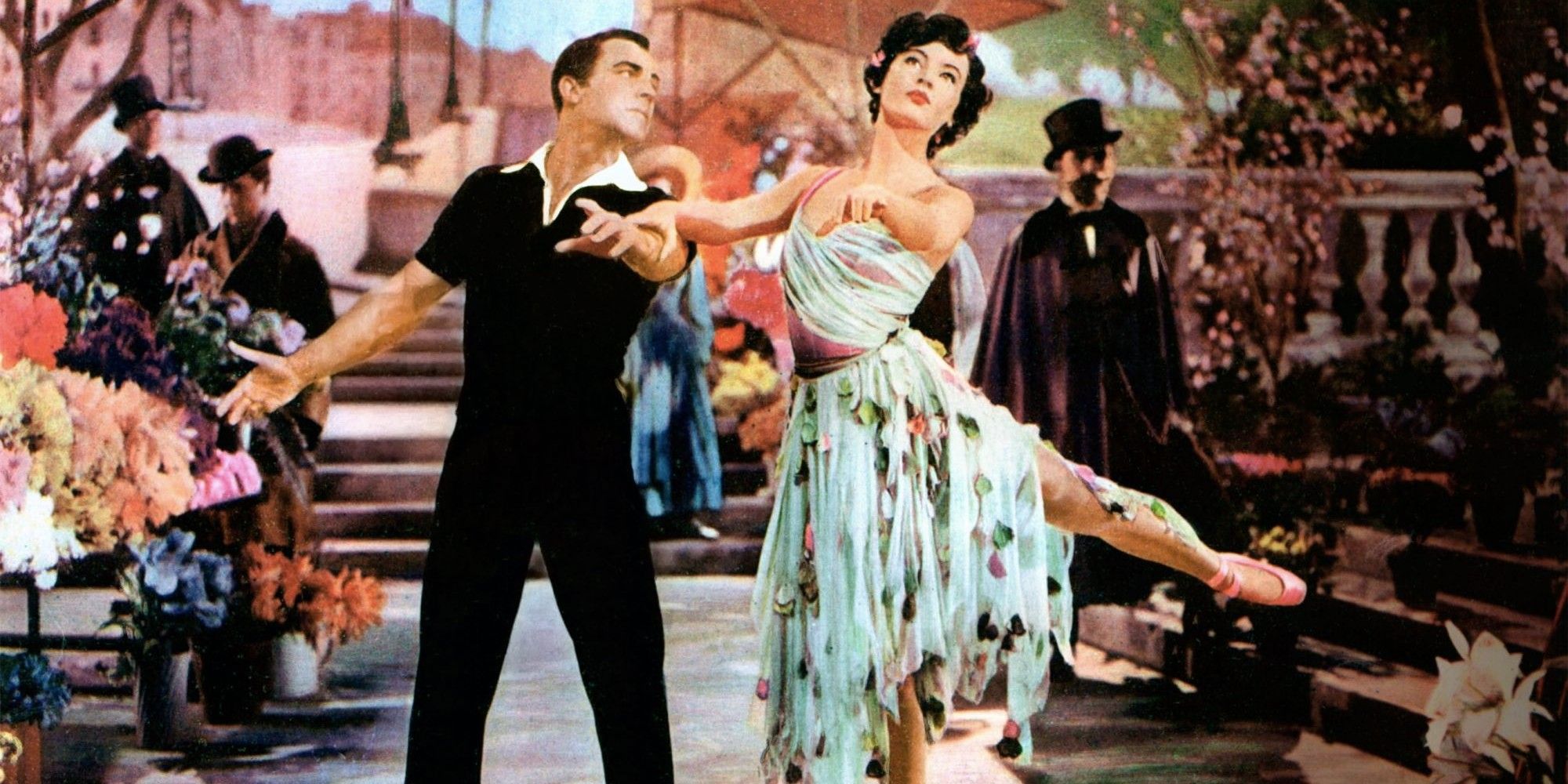Hollywood's Golden Age gave audiences some of the greatest stars in cinema history, such as Clark Gable, Judy Garland, and Bette Davis, and countless classic films, including Gone With the Wind and The Wizard of Oz, that remain all-time favorites among die-hard movie fans. Each star made their personal impact on Hollywood and the silver screen, but some, like Fred Astaire and Ginger Rogers, are rare gems that fall into the impressive category known as a triple threat.
Legitimate triple threats, performers who could sing, dance, and act, are rare today in Hollywood and were at their high point during the Golden Age with big names such as Bill "Bojangles" Robinson, Lena Horne, and Rita Hayworth. While there are plenty of stars who are worth mentioning, there are some who were the ultimate definition of a classic triple threat. From the universally known child star, Shirley Temple, to the legendary star and choreographer, Gene Kelly, these are the best triple threats from Hollywood's Golden Age, ranked.
10 Shirley Temple
"Bright Eyes" (1934), "Curly Top" (1935), and "Dimples" (1936)
Child star, Shirley Temple, was one of Hollywood's biggest box-office draws during the 1930s and became known for her golden curly locks and small but mighty presence on the silver screen. Born in Santa Monica, California, Temple's mother had encouraged her to learn to sing, dance, and act, and she started performing at the impressive age of 3 years old. After signing an extended contract with Fox Studios, she earned her breakthrough role in the 1934 film, Stand Up and Cheer! gaining immense notoriety by the mid-1930s.
She continued to star in popular musical films, including Dimples, The Little Princess, and Curly Top, and was also paired alongside some of Hollywood's biggest stars, including Gary Cooper, Randolph Scott, and Bill "Bojangles" Robinson, who was her favorite co-star. Temple and Robinson made waves with their musical number in the 1935 film, The Little Colonel, which marked the first interracial dance couple to perform together. While Temple earned a majority of her film success as a child actress, she went on to appear in several notable films as an adult, such as John Ford's Fort Apache and The Bachelor and the Bobby-Soxer, with Cary Grant. Temple's prominence on the big screen and the legacy she left on American cinema as a cultural icon deems her to be one of the greatest triple threats of Hollywood's Golden Age.
9 Lena Horne
"Stormy Weather" (1943), "Cabin in the Sky" (1943), and "The Wiz" (1978)
Lena Horne was a trailblazing triple threat who appeared in various classic films, television shows, and theater productions for over seven decades. Horne was born in Brooklyn, New York, and, at the age of sixteen, she joined the chorus at New York City's famous Cotton Club, becoming a popular nightclub performer before making her way to the Broadway stage. In 1935, Horne made her first screen appearance as a dancer in Cab Calloway's Jitterbug Party and eventually signed a contract with MGM Studios several years later.
Horne made her feature film debut in the 1942 film Panama Hattie and continued to appear in several of MGM's prominent musical films, including Stormy Weather, Till the Clouds Roll By, and Vincente Minnelli's Ziegfield Follies. Despite her success, Horne eventually became disenchanted with Hollywood and decided to focus on her career as a singer, recording and performing live with notable names such as Frank Sinatra, Tony Bennett, and Sammy Davis Jr. In 1969, she returned to the silver screen in The Death of a Gunfighter with Richard Widmark and also starred in the 1978 iconic musical film, The Wiz. Even though Horne shifted away from Hollywood, she still left a lasting impression that paved the way for others and is considered to be one of the best female triple threats of Hollywood's Golden Age.
8 Rita Hayworth
"Gilda" (1946), "Pal Joey" (1957), and "You Were Never Lovelier" (1942)
Rita Hayworth is an essential icon of Hollywood's Golden Age and perhaps best known for her role in the classic film noir, Gilda. Hayworth was born Margarita Cansino in Brooklyn, New York into an entertainment family, and at the age of twelve, she performed alongside her father in their duo act, Dancing Cansinos. After being spotted by the head of Fox, Hayworth signed a contract, appearing in exotic roles and billed as Rita Cansino. When her contract wasn't renewed with Fox, Hayworth signed with Columbia Pictures, where she underwent extensive cosmetic procedures and dyed her hair a fiery red, which became a signature in her overall appearance.
During her first few years with Columbia, Hayworth found minor success, but her career took off after co-starring with Fred Astaire in the 1941 movie, You'll Never Get Rich, which was a massive hit. The film's major success led to Hayworth and Astaire starring together in a second film, You Were Never Lovelier. Despite making several films with Ginger Rogers, Astaire considered Hayworth to be his favorite dancing partner. While audiences typically recognize Hayworth for her acting chops, she is considered to be one of the most underrated triple threats from Hollywood's Golden Age who deserves more recognition for her immense array of talent.

